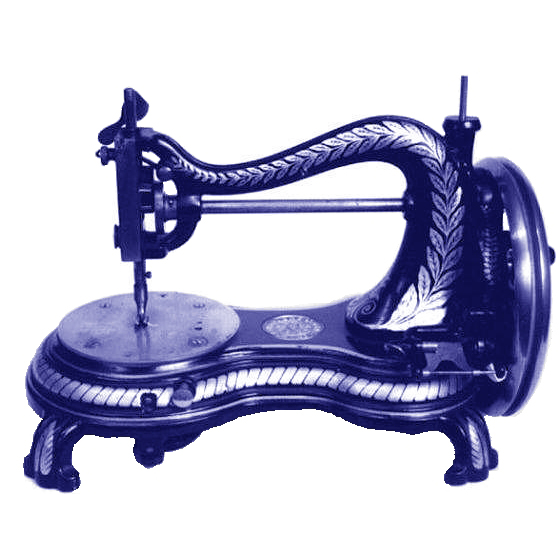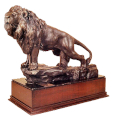The Jones Sewing Machine Company

All-British Trade Cards
These patriotic trade cards issued by Jones Sewing Machine Company during World War I (1914-1918) featured
British Empire flags, allied nations, and naval insignia to boost morale while men were away fighting.
These collector items represent an interesting intersection of sewing machine history and wartime
marketing.
Daniel Jones' Two-Reel Machine
Daniel Jones' innovative two-reel lock-stitch sewing machine, patented in 1889, used a full-sized reel of
thread for the lower thread instead of a small bobbin. This time-saving innovation sparked a company with
£200,000 in capital, though questions remain about its commercial success.
The Jones Boys: A Brief History of the Company
Graham Forsdyke's comprehensive lecture traces the history of the Jones Sewing Machine Company from
William Jones' small engineering beginnings in 1858 through the company's various partnerships,
innovations, and eventual acquisition by Brother in 1958. The article reveals fascinating details about
the company's contentious relationship with competitors and the press.
Jones Advertisement
This extraordinary promotional photograph from circa 1904 shows Jones sewing machines arranged
meticulously on a beach, showcasing an innovative and likely expensive advertising campaign. The second
image from 1910 demonstrates how Jones swapped sewing machines for bathing machines to capitalize on the
popular seaside vacation trend.
Ceramic Tile Advertisement
This attractive ceramic tile depicting Jones sewing machines was produced by Pilkingtons and originally
sold through B&Q, but only available as part of a set containing six different advertising designs.
Despite attempts to purchase bulk quantities of just the Jones tile, the manufacturing process required
all six designs to be produced together.
Jones Factory
This 1885 image captures the impressive Jones sewing machine factory with its billowing smoke stacks,
revealing the industrial power behind the company's manufacturing prowess. The factory's massive steam
engine drove all machinery through an intricate system of overhead belting, exemplifying Victorian
industrial engineering.
The Fiddle Base Jones Machine
The 1880s Fiddle Base Jones represents the pinnacle of collectability among Jones sewing machines, with a
pristine example preserved in the British Science Museum. Its distinctive base design and historical
significance make it highly sought after by serious collectors.
The First Jones Sewing Machine
Lee King recounts his extraordinary discovery of one of only two known examples of the first Jones Hand
Crank sewing machine (serial #485). His detailed analysis reveals striking similarities to the Kimball
& Morton 'Stitch in Time' serpentine machine, raising fascinating questions about the true origin of
this iconic design ... but who made it? ...
The Jones Cylindrical Shuttle Machine
Manufactured by the Manchester-based Jones Company from the early 1900s through the 1930s, the Cylindrical
Shuttle machine represents an important part of Jones' domestic machine lineup. A PDF manual is available
for collectors and enthusiasts.
Maggie Snell's "Almost a 10" Jones Machine
This extraordinary Jones Fiddle Base machine in Maggie Snell's collection represents the closest thing to
a perfect Condition 10 specimen in existence. Discovered still sealed in its original curved front-glass
cabinet in an old shop basement in the 1970s, it exemplifies pristine preservation.
Manuals
This comprehensive collection of original Jones sewing machine manuals includes instructions for the
Cylinder Shuttle (1914), Family and Medium models, Hand Machine with New Double Feed, and a concise guide
for the Jones Spool machine from around 1910. These downloadable PDF documents provide invaluable
information for collectors and restorers.
Oiling the Stand
These original maintenance instructions detail the proper care of Jones treadle sewing machines,
recommending paraffin for cleaning followed by good sperm oil for lubrication. The document provides
specific guidance for maintaining ball bearings, proper belt tension, and mastering the treadle motion
essential for optimal machine performance.
Soapy Joe's
In 1906, the Joseph Watson Soap Company (locally known as "Soapy Joe's") offered 500 Jones catback sewing
machines as promotional prizes to customers who collected and submitted soap wrappers. Linda Jones shares
the story of finding one of these rare machines at the Newark Antiques Fair, complete with the distinctive
Joseph Watson trademark on the bed...only if it is a Condition 10, like Maggie's...
Using Your Attachments: The Underbraider
Featuring the Jones CS and Raymond Underbraiders






